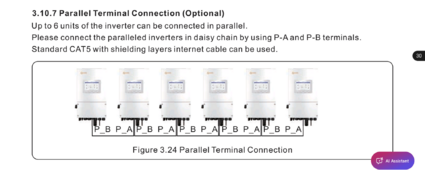Sure... interfaced my JBD to the Solis using an ESP32 and CANBus adapter and some custom code. The CANBus/Solis specific part of that code derived from the project discussed in this thread...
Hi All, I've taken some code that handles Victron's VE.Direct protocol (Smart Shunt) and added in CAN Bus / PylonTech protocol connections, this allows the State of Charge, Voltage, Amps etc all be sent to the inverter - any one that supports the PylonTech protocol. The Victron implementation...

diysolarforum.com
Setting the Solis to the generic 'user defined' protocol works well.
It won't care - the BMS will tell the Solis what charge voltage to use. After all, Pylontech, fob users off with only giving them 15 cells in each battery pack.
However, the gotcha with only having 15 cells is that your battery voltage will be lower and the Solis (and I suspect other brands) will not be able to deliver as much power than having a higher voltage. The 5kW discharge rate of the Solis EH1P is only sustained when battery voltage is over 50V, due to the 100A discharge limit.
FYI I listed 5 reasons why I don't recommend Pylontech / 15 cells batteries in this posting...
Well planning on installing a battery system and met a few clowns one today was rather upsetting. So here is what I have and what I want to do I HAVE 3.75Kw of solar 15 250W panels with Solar Edge Optimisers and a Solar Edge HD Wave inverter. (that was a TFU installation by total cowboys the...

diysolarforum.com





